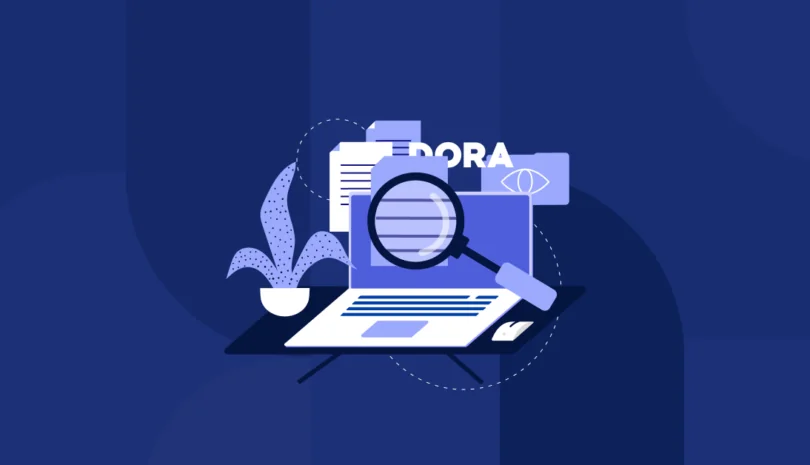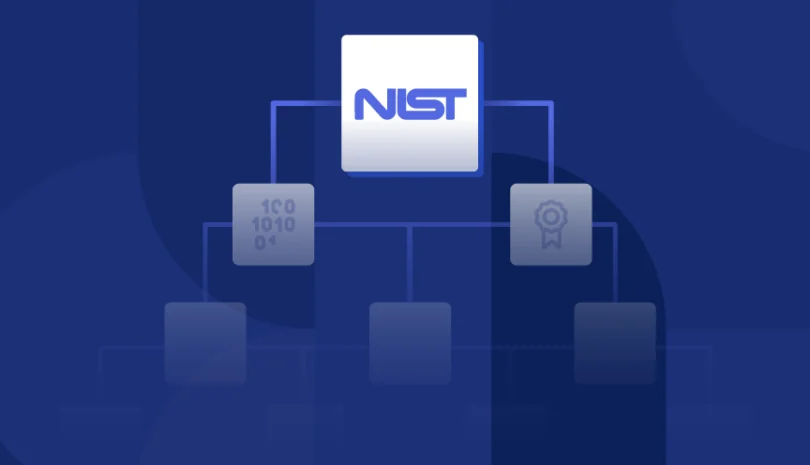Ensuring compliance with the Digital Operational Resilience Act (DORA) is a top priority for financial institutions as the 2025 deadline approaches. DORA sets strict requirements for ICT risk management, incident reporting, resilience testing, and third-party oversight, making it essential for organizations to assess their own security posture and that of their vendors.
Questionnaires play a critical role in this process by helping businesses evaluate internal controls, identify vulnerabilities, and ensure third-party service providers meet regulatory expectations. A well-structured DORA questionnaire allows organizations to proactively address compliance gaps, strengthen resilience, and minimize regulatory risks.
In this blog, we outline the key questions financial institutions should include in their DORA compliance assessments. These questions cover ICT governance, risk management, incident response, and third-party dependencies—helping organizations build a stronger, more secure foundation for compliance.
Understanding the Scope of a DORA Compliance Questionnaire
A DORA compliance questionnaire is designed to assess an organization’s readiness to meet the regulation’s requirements. It covers five key areas:
- ICT Risk Management – Identifying, assessing, and mitigating risks related to information and communication technology.
- Incident Reporting – Ensuring structured, timely reporting of cyber incidents to regulatory authorities.
- Third-Party Risks – Evaluating the security posture of outsourced ICT providers and critical vendors.
- Resilience Testing – Conducting regular stress tests and cyber exercises to measure operational resilience.
- Information Sharing – Encouraging secure collaboration and intelligence sharing to mitigate systemic risks.
Who Should Answer the Questionnaire?
The questionnaire should be completed by key stakeholders within the organization, including CISOs, IT security teams, compliance officers, risk management teams, and procurement specialists responsible for third-party vendor assessments.
Objectives of the Questionnaire
The primary goal is to identify compliance gaps, strengthen risk management strategies, and ensure third-party vendors meet DORA’s security standards. By proactively assessing these areas, financial institutions can reduce regulatory risks, enhance cyber resilience, and maintain trust with customers and regulators.
Top Questions to Include in Your Questionnaire
To ensure compliance with DORA, financial institutions must ask the right questions when assessing their internal security posture and third-party vendors. These questions should address ICT risk management, incident reporting, third-party risks, resilience testing, and information sharing—all critical components of the regulation. Below are the key areas to focus on when designing a DORA compliance questionnaire.
ICT Risk Management Questions
Assessing ICT risk management is essential for ensuring resilience. Some key questions take into consideration:
- Do you have a documented ICT risk management framework?
- How often do you conduct risk assessments?
- What controls are in place to prevent unauthorized access to sensitive data?
Incident Reporting
DORA mandates structured and timely reporting of cyber incidents. Some key questions take into consideration:
- Do you have a formal incident response plan?
- How quickly can your organization detect and report a security incident?
- What processes ensure compliance with regulatory reporting timelines?
Third-Party Risk Management
Financial institutions must oversee vendor risks effectively. Some key questions take into consideration:
- How do you assess the cybersecurity posture of third-party providers?
- What measures ensure continuous monitoring of vendor risks?
- Do you have contingency plans for third-party service disruptions?
Digital Operational Resilience Testing
Resilience testing helps organizations withstand cyber threats. Some key questions take into consideration:
- How often do you conduct penetration tests and stress tests?
- Do you simulate cyberattack scenarios to test system resilience?
- What corrective actions follow resilience test failures?
Information Sharing
DORA encourages secure intelligence sharing. Some key questions take into consideration:
- How do you share threat intelligence with regulators and industry peers?
- What policies govern secure data exchange?
- How do you ensure compliance with data protection regulations when sharing information?
By including these critical questions, organizations can strengthen their DORA compliance efforts and proactively mitigate cybersecurity risks.
Tips for Designing an Effective Questionnaire
Creating an effective DORA compliance questionnaire is essential for ensuring that both internal teams and third-party vendors meet regulatory standards. Here are some tips to help design a streamlined and efficient questionnaire:
1. Keep Questions Clear and Concise
Avoid jargon and complex language. Questions should be simple, direct, and easily understood to ensure accurate responses. This will help save time and improve the quality of the data collected.
2. Use a Mix of Open-Ended and Multiple-Choice Questions
Incorporate both qualitative and quantitative questions. Open-ended questions can provide deeper insights, while multiple-choice questions help quantify responses and identify trends more easily.
3. Tailor Questions to Specific Vendors or Internal Teams
Make sure that questions are customized for different audiences. Questions for internal teams may focus on organizational processes, while questions for vendors should address supply chain risks and security protocols.
4. Regularly Update the Questionnaire
As regulations evolve and new insights are gained, update the questionnaire to reflect changing compliance requirements or lessons learned from previous assessments. This ensures that your risk management practices remain relevant and effective.
By following these tips, you can design a DORA compliance questionnaire that drives meaningful insights and supports proactive compliance efforts.
Analyzing Questionnaire Responses
After collecting responses from your DORA compliance questionnaire, analyzing them is key to identifying vulnerabilities and improving your cybersecurity posture.
1. Identify Gaps and Vulnerabilities
Review the responses to pinpoint where processes fall short of DORA’s requirements. Look for areas such as incomplete risk management frameworks, insufficient incident reporting protocols, or weak third-party vendor oversight. Recognizing these gaps helps mitigate potential compliance and security risks.
2. Prioritize Areas for Improvement
Not all gaps are critical. Use the questionnaire results to prioritize the most pressing issues based on their impact on compliance and security. Focus first on vulnerabilities that pose the highest risk to operational resilience and regulatory adherence.
3. Communicate Findings to Stakeholders
Ensure clear communication of findings to relevant stakeholders—such as CISOs, risk managers, and compliance teams. Share insights on what needs improvement, set actionable goals, and outline timelines for remediation. Integrate these findings into your compliance roadmap to ensure comprehensive preparation for DORA.
By analyzing questionnaire responses effectively, organizations can identify weak spots, prioritize improvements, and take strategic action to ensure compliance with DORA, strengthen security, and enhance operational resilience.
DORA Questionnaire Solutions
A well-structured DORA compliance questionnaire is an essential tool for achieving regulatory compliance. It helps organizations identify gaps, evaluate risks, and align their processes with the requirements set by DORA. By incorporating targeted questions around ICT risk management, third-party oversight, incident reporting, and resilience testing, businesses can ensure they meet DORA’s comprehensive cybersecurity and operational resilience standards.
Starting the questionnaire development process today is crucial for staying ahead of the 2025 compliance deadline. This proactive approach allows companies ample time to address potential issues and implement necessary improvements. A well-prepared questionnaire not only facilitates compliance but also strengthens the overall security posture of an organization.
Panorays supports DORA compliance by providing an intuitive platform to create, distribute, and analyze vendor questionnaires. The platform automates risk assessments, streamlines third-party oversight, and provides real-time insights into vendor compliance, making it easier to meet regulatory expectations. Panorays also ensures that your processes are continually updated and aligned with evolving DORA requirements, allowing organizations to stay on top of compliance changes.
DORA Questionnaire FAQs
-
The DORA questionnaire is a vital tool for assessing an organization’s preparedness for the Digital Operational Resilience Act. It helps identify compliance gaps, strengthens cybersecurity defenses, and ensures that both internal operations and third-party vendors meet the regulation’s requirements.
-
The questionnaire must be completed by financial institutions, critical service providers, and third-party vendors involved in providing ICT services to financial organizations. Compliance is required for all entities that fall under the DORA framework.
-
The questionnaire is comprehensive, covering areas such as ICT risk management, incident reporting, third-party risk, resilience testing, and information sharing. It requires detailed responses to assess an organization’s ability to meet DORA’s requirements.
-
If a vendor fails the DORA assessment, the organization may need to take corrective action, such as requiring the vendor to improve their security posture or even terminating the contract if the risk is deemed too high. Continuous monitoring and reassessment are essential for maintaining compliance.



